Why AdRoll is Your Ideal Programmatic DSP
AdRoll helps you run full-funnel, multi-channel ad campaigns. Learn how our programmatic DSP enables better ad campaigns that convert customers.
Read More
With customers requiring an average of 56 touchpoints before making a purchase, every advertiser should be using retargeting. This brings your window shoppers back into the digital store, and their interest is renewed toward your brand!
Make the most of the shoppers you know have already engaged with your brand and worked to gain them back, since it’s astronomically more difficult to get a new customer than it is to retain one, or to earn the loyalty of a new shopper who’s never heard of you over one who’s visited your checkout page.
But with so many touchpoints in the customer journey, you’ll need creativity in how you engage with your audience. This blog post will give you 12 examples from AdRoll for potential retargeting techniques.
Retargeting is a digital advertising tactic that serves ads to potential customers based on their prior interactions with the brand. We have a whole guide on retargeting and how it works before you dive into examples.
If you’ve studied up, let’s get into strategies that can draw a potential customer’s eye.
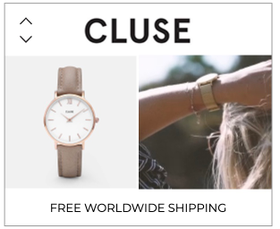
If a customer has already taken a peek at your products, or you’re facing their cart abandonment, remind them of what they’re missing.
Include personalized offers in your retargeting efforts, such as the products they’ve abandoned in their cart or a discount on a service they viewed.
Personalization is an irresistible retargeting strategy. It’s what makes those products you’ve been eyeing so hard to ignore.
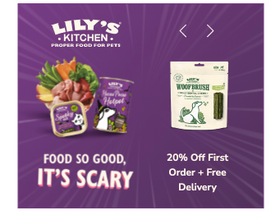
Consider a targeted ad toward new buyers specifically. Here, Lily’s Kitchen builds on our last advice and adds value with a coupon code.
You can feature a carousel of tempting products in a dynamic ad. Target customers that haven’t made a purchase but have interacted with your brand, through website visits or form fills, for example.
The code works because sometimes buyers need that last little push to make their purchase — you’ve likely received targeted emails with the same catch.
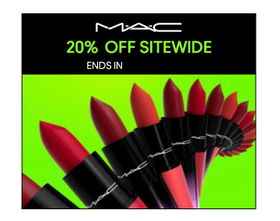
If a personalized first-time buyer code isn’t feasible, retargeting your website stalkers during a sale is another strategic opportunity.
Instead of just announcing a sale to everyone, use retargeting to specifically target people who have already visited your site. These are potential customers who've shown interest, and a timely ad promoting a percentage off, a buy-one-get-one deal, or a flash sale is the perfect nudge they need to convert.
Make the offer clear and emphasize urgency to drive immediate action and boost your ROAS. For instance, MAC here notes the percentage discount shoppers can expect.
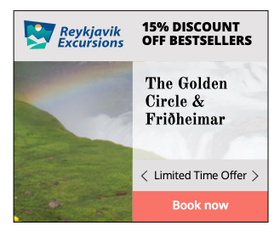
For subscriptions, products, and services alike, use the popularity of your best-selling products by featuring them in your display ads, especially if those products were viewed or interacted with by your retargeted audience.
Offering a specific discount on these already proven popular items can significantly increase conversion rates. This approach taps into social proof and provides an immediate, attractive incentive for warmer leads to purchase items they know are highly desired by others.
It’s also a strategy that helps if you don’t know exactly what your target audience was searching for. If you put your bestsellers out there, there’s a chance your most popular items will entice them.
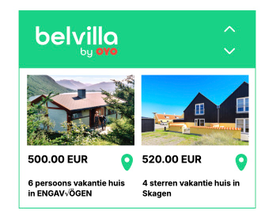
For businesses with geographical targeting opportunities, (travel agencies, real estate, local services, and so on), retargeting based on a customer’s regional research is powerful.
If a user explored hotels in Paris or homes in Denver, serve them ads showcasing specific options related to that exact region. This personalization makes your ad hyper-relevant, cutting through noise and directly addressing their specific intent, leading to higher engagement and conversions.

Social proof, like reviews or testimonials, is a massive conversion driver. Use retargeting to display compelling customer reviews, testimonials, or star ratings directly within your ads.
This is effective for users who are in the consideration phase. Positive feedback from loyal customers helps build trust while shoppers research your product, and this is applicable to both B2B and B2C businesses and services. Seeing what happy customers say can be the final push needed for a hesitant buyer.
Your social proof isn’t limited to 5-star reviews, either. Consider using screenshots of positive social media posts (with the users’ permission), case study quotes, or testimonials.
Here, Lull not only touts their high review average but also the sheer number of reviews: 26,000.
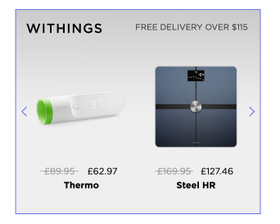
Shipping costs are one of the driving forces behind abandoned carts. If a user leaves your site without purchasing, retarget them with an ad explicitly promoting free shipping.
This directly addresses one of the biggest retail friction points and removes a barrier to purchase. For many customers, the perceived value of free shipping outweighs a small discount, making it a highly effective incentive to complete their order.
Withings uses this principle to encourage a website visitor to buy in bulk: spend over $115 and earn free shipping. They also couple this with discounted, personalized recommendations.

If users are in the discovery stage and have visited your site, you have a chance to proactively scoop them up before competitors.
Use RLSA (Remarketing Lists for Search Ads) to show specific ads to your website visitors even when they're searching for a competitor's brand name or an industry term on Google. This allows you to reengage them at a critical decision-making point, reminding them of your value proposition and potentially "stealing" the sale from a rival.
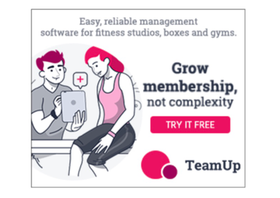
For products with a complex buying journey (like B2B SaaS or professional services), offering a free trial in your retargeting efforts can get customers in the door.
Target users who've shown interest (e.g., visited product features pages) but haven't committed. A free trial lowers the barrier to entry without immediate financial commitment, significantly increasing the likelihood of eventual conversion to a paid plan.
TeamUp offers a free trial of their membership — this gets a potential buyer used to the product and assimilates it into daily life. Once they’ve tried your product, continuing with a subscription might be a no-brainer.
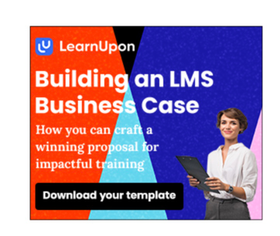
Sometimes, the immediate goal isn't a sale, especially if you’re in an industry with long sales cycles. For these kinds of industries, your retargeting strategy might be building trust and capturing a lead.
Retarget users who've engaged with your content by offering something free — an e-book, a webinar, a template, a strategy session, or a checklist. This positions you as a helpful resource, without being pushy from the offset. An ad strategy like this moves them further down the funnel while you get to gather their contact information for continued nurturing.
LearnUpon leads with a template. This gives their prospects a chance to address one of their painpoints…from a service that can solve many more.
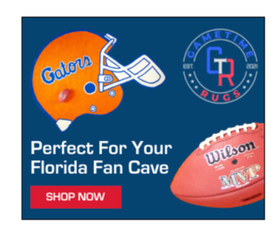
Do you have products, events, or services you know a particular geo would love? If a user from a targeted geographic segment recently visited your website, serve them ads highlighting offers for their location.
This leverages their environment and prior interest to make your ad feel more personal.
Gametime Rugs uses this strategy by promoting fan favorites by state. Florida Fans will see their favorite sports brand and be more motivated to click than an array of popular teams.

Directly showcasing your discounts converts hesitant buyers. A retargeting ad that clearly highlights a percentage off, a fixed dollar amount discount, or a markdown on a bundle deal gives that extra nudge.
Make the offer prominent — and for that added urgency, consider a timer.
AlgaeCal showcases some of their popular products with a specific percent discount; 37% off feels concrete and candid.
To get the most out of these retargeting examples, remember our best practices:
Segment your audience: Don't show the same ad to everyone. Tailor your message to their specific interactions.
Personalize your ads: Make your ads feel relevant to the individual.
Vary creatives: Combat ad fatigue by regularly refreshing your images and copy.
Offer value: Give people a compelling reason to come back — a discount, exclusive content, or a free trial.
Mind frequency: Don't overwhelm users. Set frequency caps to avoid being intrusive.
Track and optimize: Continuously monitor your campaign performance and make adjustments based on what's working.
You’ve come to the right place. Not only are these retargeting examples helpful for your ad strategy, but they’re all from AdRoll customers.
We’re the best in the business when it comes to retargeting. Reach out to us today to get started making compelling retargeting ads that convert.
Last updated on July 16th, 2025.